Discover 20 hidden attractions, cool sights, and unusual things to do in Marrakech (Morocco). Don't miss out on these must-see attractions: Jemaa el-Fnaa, Majorelle Garden, and Kutubiyya Mosque. Also, be sure to include Dar Moulay Ali in your itinerary.
Below, you can find the list of the most amazing places you should visit in Marrakech (Marrakech - Tensift - Al Haouz).
Table of Contents
Jemaa el-Fnaa
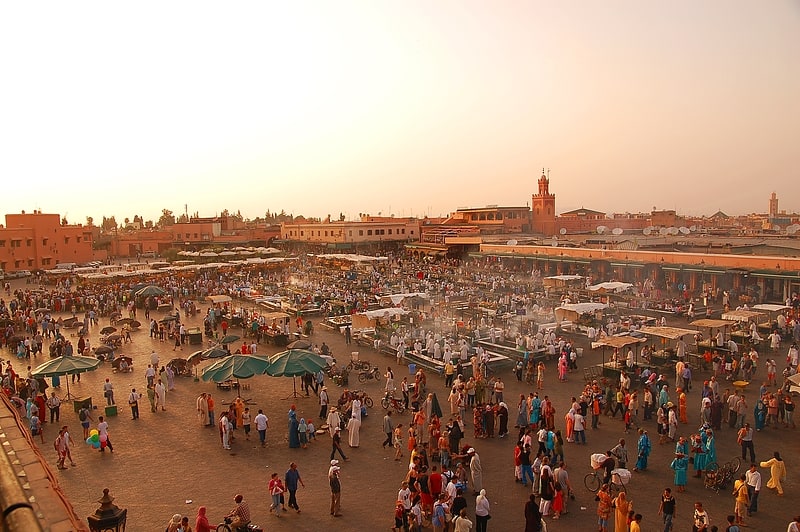
Also known as: ساحة جامع الفنا
Historical landmark in Marrakesh, Morocco. Jemaa el-Fnaa is a square and market place in Marrakesh's medina quarter. It remains the main square of Marrakesh, used by locals and tourists.[1]
Majorelle Garden
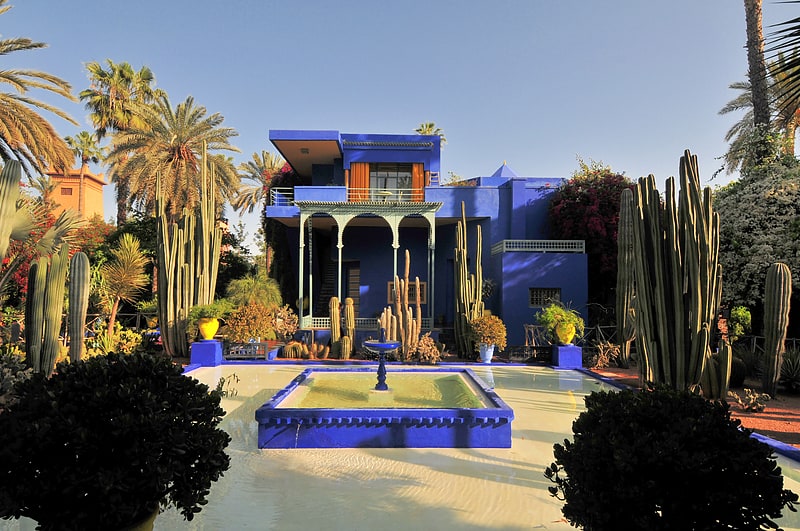
Also known as: حديقة ماجوريل
Garden with exotic plants and fountains. The Majorelle Garden is a two and half acre botanical garden and artist's landscape garden in Marrakech, Morocco. It was created by the French Orientalist artist Jacques Majorelle over almost forty years, starting in 1923, and features a Cubist villa designed by the French architect, Paul Sinoir in the 1930s. The property was the residence of the artist and his wife from 1923 until their divorce in the 1950s. In the 1980s, the property was purchased by the fashion designers, Yves Saint-Laurent and Pierre Bergé who worked to restore it. Today, the garden and villa complex is open to the public. The villa houses the Berber Museum and in 2017 the Yves Saint Laurent Museum opened nearby.[2]
Address: Rue Yves St Laurent, 40090 Marrakech
Kutubiyya Mosque

Also known as: جامع الكتبية
12th-century mosque with a garden. The Kutubiyya Mosque or Koutoubia Mosque is the largest mosque in Marrakesh, Morocco. The mosque's name is also variably rendered as Jami' al-Kutubiyah, Kutubiya Mosque, Kutubiyyin Mosque, and Mosque of the Booksellers. It is located in the southwest medina quarter of Marrakesh, near the famous public place of Jemaa el-Fna, and is flanked by large gardens.
The mosque was founded in 1147 by the Almohad caliph Abd al-Mu'min right after he conquered Marrakesh from the Almoravids. A second version of the mosque was entirely rebuilt by Abd al-Mu'min around 1158, with Ya'qub al-Mansur possibly finalizing construction of the minaret around 1195. This second mosque is the structure that stands today. It is considered a classic and important example of Almohad architecture and of Moroccan mosque architecture generally. The minaret tower, 77 metres (253 ft) in height, is decorated with varying geometric arch motifs and topped by a spire and metal orbs. It likely inspired other buildings such as the Giralda of Seville and the Hassan Tower of Rabat, which were built shortly after in the same era. The minaret is also considered an important landmark and symbol of Marrakesh.[3]
Address: Rue lbn Khaldoun, Marrakech
Dar Moulay Ali
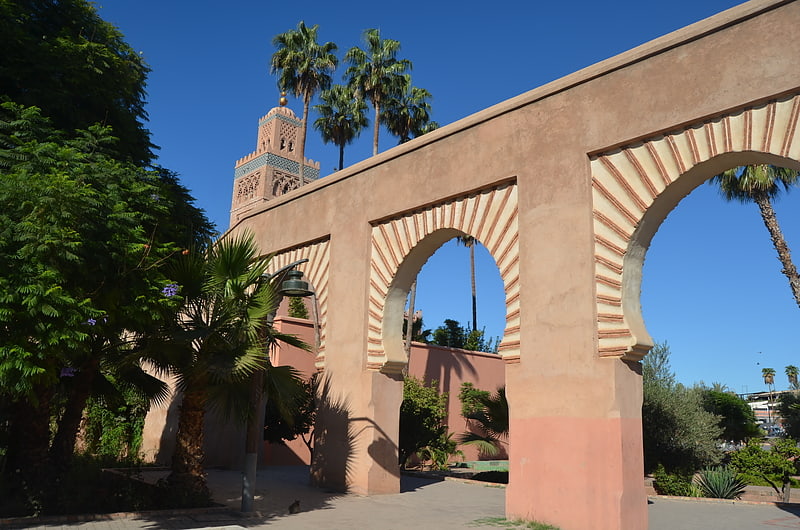
Dar Moulay Ali is a historic residence and riad in Marrakesh, Morocco. It is located right next to the Kutubiyya Mosque. It currently houses the French consulate.[4]
Bahia Palace
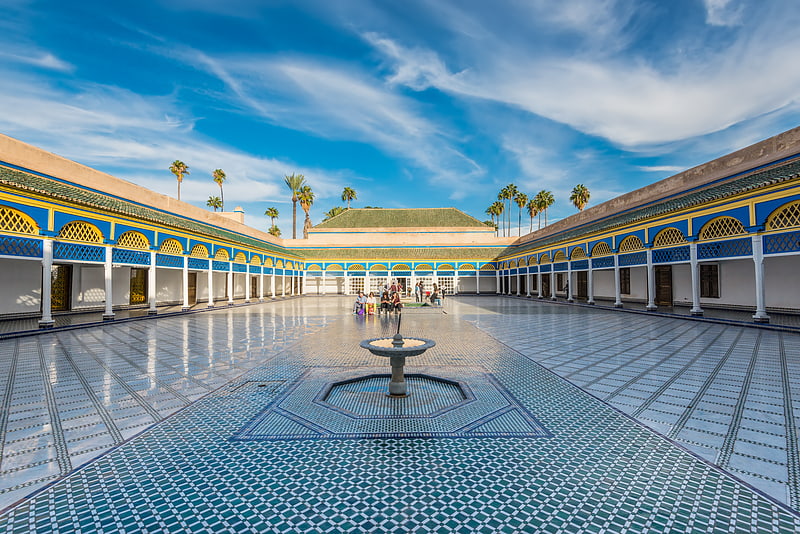
Also known as: قصر الباهية
Ornate 19th-century palace complex. The Bahia Palace is a late 19th-century palace in Marrakesh, Morocco. The palace was first begun by Si Musa, grand vizier of Alaouite sultan Muhammad ibn Abd al-Rahman, in 1859 and then continued and expanded by his son Si Ba Ahmed ibn Musa, grand vizier of Sultan Moulay Abdelaziz between 1894 and 1900. Today it is a well-known historic monument and tourist attraction in the city.[5]
Address: 5 Rue Riad Zitoun el Jdid, 40000 Marrakech
Menara gardens
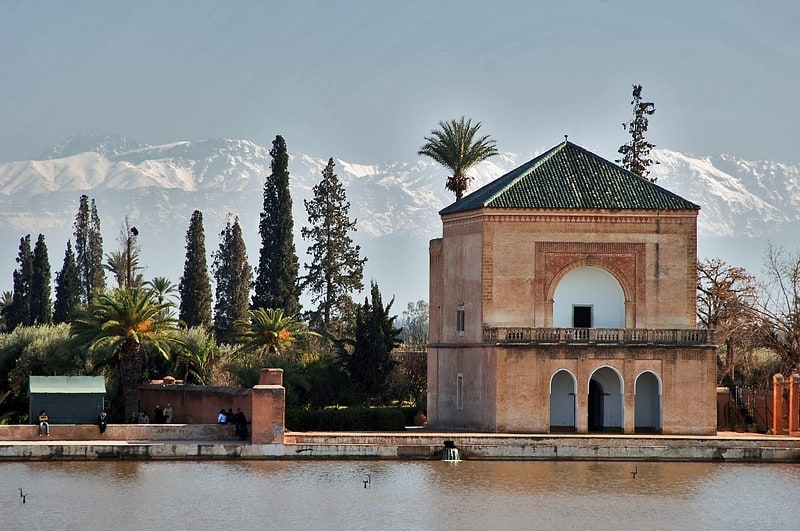
Also known as: حدائق المنارة
Historic park with mountain views. The Menara Gardens are a historic public garden and orchard in Marrakech, Morocco. They were established in the 12th century by the Almohad Caliphate ruler Abd al-Mu'min. Along with the Agdal Gardens and the historic walled city of Marrakesh, the gardens have been listed as UNESCO World Heritage Site since 1985. The gardens are laid out around a central water basin and reservoir, next to which is a pleasure pavilion dating in its current form from the 19th century. The reservoir and its pavilion, often framed in pictures against the background of the High Atlas Mountains to the south, are considered one of the iconic views and symbols of Marrakesh.[6]
Yves Saint Laurent Museum

The Yves Saint Laurent Museum in Marrakech is a museum dedicated to the fashion designer Yves Saint Laurent located in Marrakesh, Morocco.[7]
Address: Rue Yves Saint Laurent, 40090 Marrakech
Mouassine Mosque

The Mouassine Mosque or al-Muwassin Mosque is a major neighbourhood mosque in Marrakech, Morocco, dating from the 16th century during the Saadian Dynasty. It shares its name with the Mouassine neighbourhood.[8]
Dar el Bacha
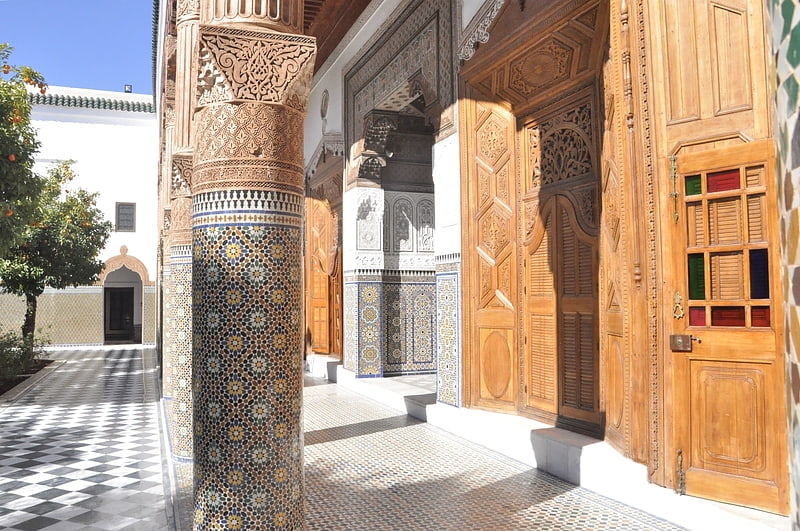
Dar el Bacha is a palace located in the old medina of Marrakesh, Morocco.[9]
Address: 20 Rue Fatima Zohra, Marrakech
Zawiya of Sidi Bel Abbes
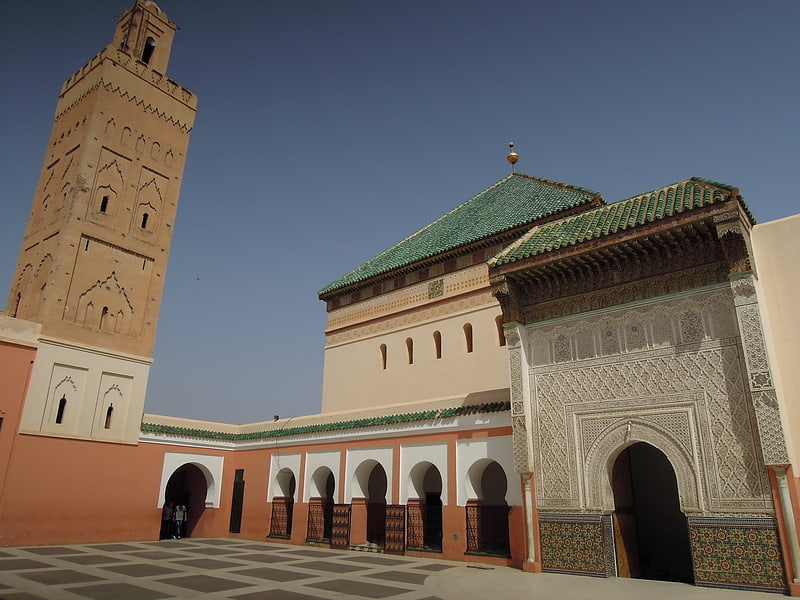
The Zawiya of Sidi Bel Abbes or Zaouia of Sidi Bel-Abbès is an Islamic religious complex in Marrakesh, Morocco. The complex is centered around the mausoleum of Abu al-Abbas as-Sabti, a Sufi teacher who died in 1204. He is the most venerated of the Seven Saints of Marrakesh, generally considered the "patron saint" of the city. The zawiya's architecture dates in part to the late Saadian period but has been modified and restored multiple times since then.[10]
Saadian Tombs
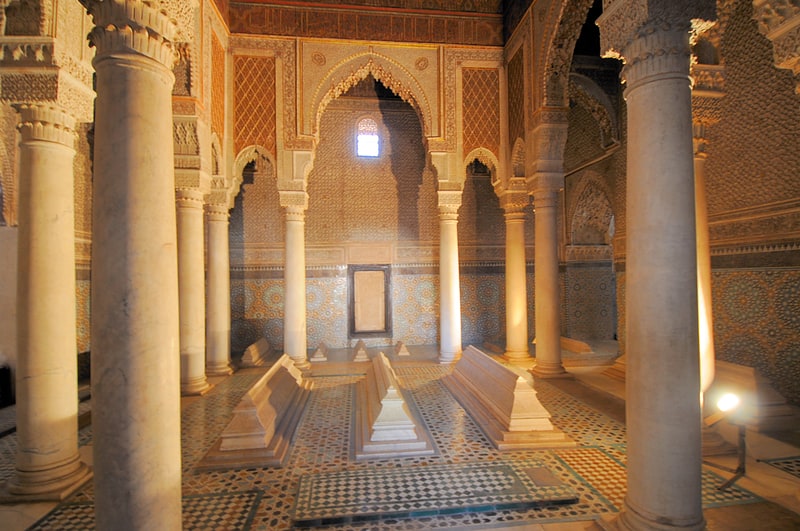
Also known as: ضريح السعديين
Tourist attraction in Marrakesh, Morocco. The Saadian Tombs are a historic royal necropolis in Marrakesh, Morocco, located on the south side of the Kasbah Mosque, inside the royal kasbah district of the city. They date to the time of the Saadian dynasty and in particular to the reign of Ahmad al-Mansur, though members of Morocco's monarchy continued to be buried here for a time afterwards. The complex is regarded by many art historians as the high point of Moroccan architecture in the Saadian period due to its luxurious decoration and careful interior design. Today the site is a major tourist attraction in Marrakesh.[11]
Address: Rue de la Kasbah, 40000 Marrakech
Ben Youssef Madrasa
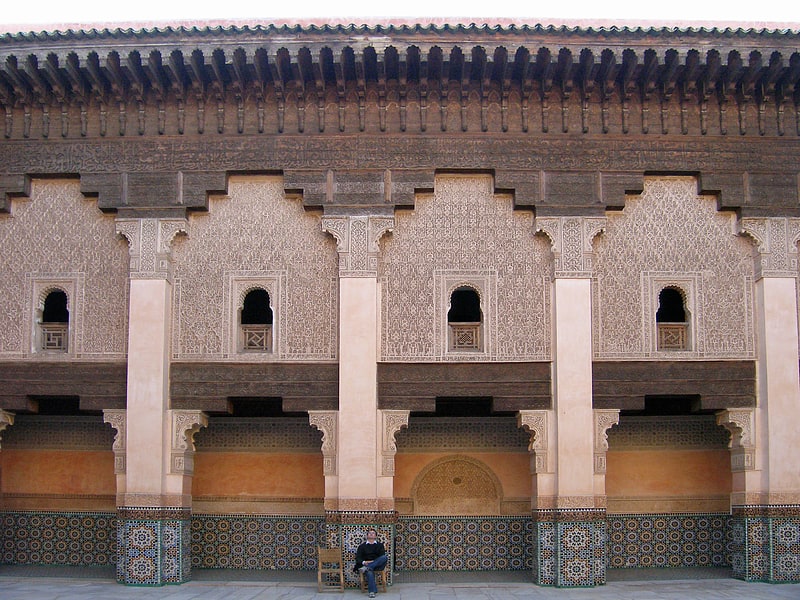
Also known as: مدرسة ابن يوسف
College in Marrakesh, Morocco. The Ben Youssef Madrasa is an Islamic madrasa in Marrakesh, Morocco. Functioning today as a historical site, the Ben Youssef Madrasa was the largest Islamic college in Morocco at its height. The madrasa is named after the adjacent Ben Youssef Mosque founded by the Almoravid Sultan Ali ibn Yusuf. The madrasa building which stands today was commissioned by the Sa'di Sultan Abdallah al-Ghalib, following a style established during the earlier Marinid period.[12]
Address: Souk Ahl Fes, 40000 Marrakesh
Marrakech Museum

Also known as: متحف مراكش
Museum of Moroccan art and history. The Museum of Marrakech is a historic palace and museum located in the old center of Marrakesh, Morocco. In addition to its notable architecture, the museum's collection showcases various historic art objects and contemporary art from Morocco.[13]
Address: Place Ben Youssef, Marrakech
Shrob ou shouf fountain
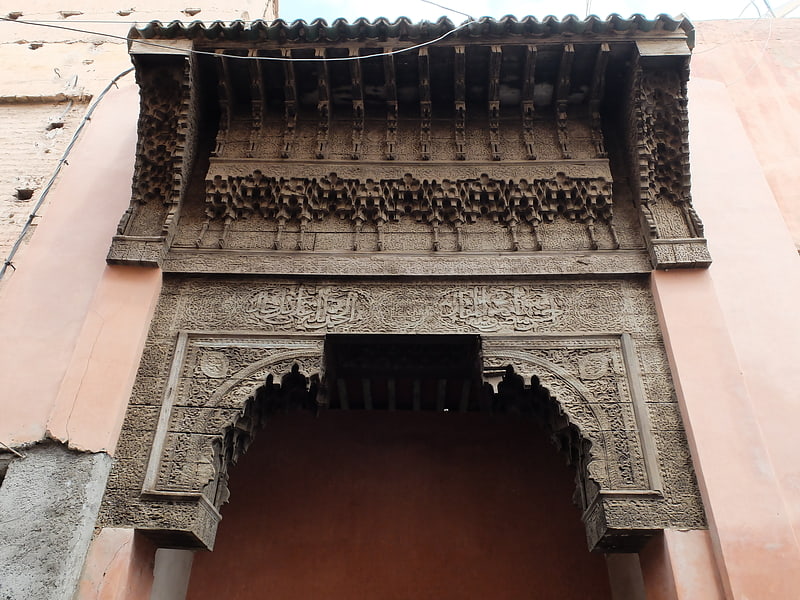
Fountain in Marrakesh, Morocco. The Shrob ou shouf fountain is a historic wall fountain in the medina of Marrakech, Morocco. It dates from the late 16th or early 17th century and is located near the Ben Youssef Madrasa.[14]
Bab Doukkala Mosque

Mosque in Marrakesh, Morocco. The Bab Doukkala Mosque is a major neighbourhood mosque in Marrakesh, Morocco, dating from the 16th century. It is named after the nearby city gate, Bab Doukkala, in the western city walls. It is also known as the al-Hurra Mosque.[15]
Slat al-Azama Synagogue
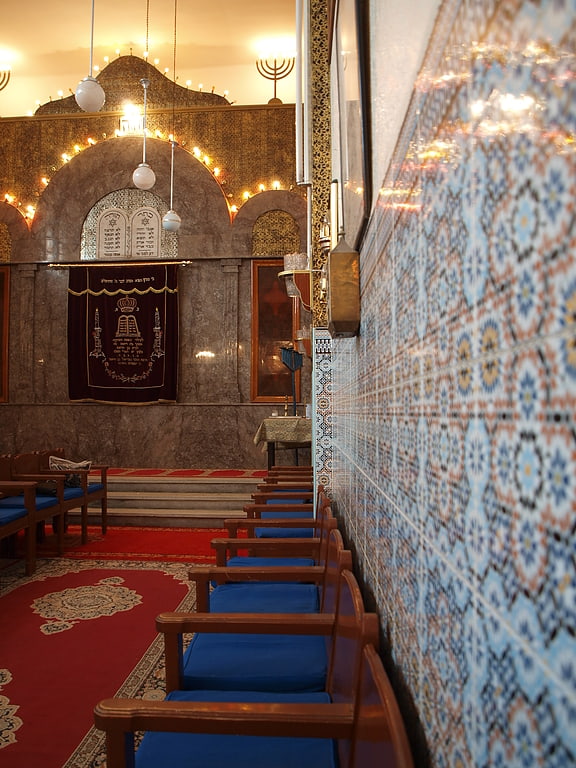
Synagogue in Marrakesh, Morocco. The Slat al-Azama Synagogue or Lazama Synagogue is one of the best-known synagogues in Marrakesh, Morocco. It is located in the historic Mellah of the old city.[16]
Bab Agnaou
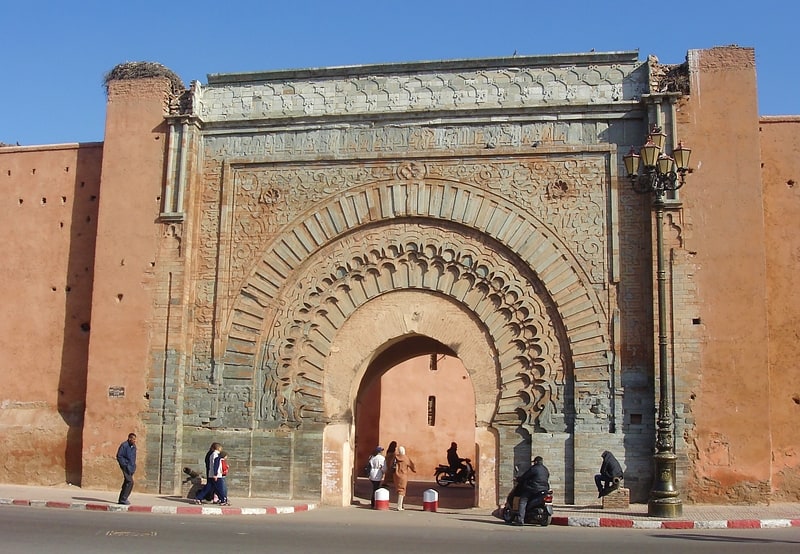
Also known as: باب أكناو
Bab Agnaou is one of the best-known gates of Marrakesh, Morocco. Its construction is attributed to the Almohad caliph Abu Yusuf Ya'qub al-Mansur and was completed around 1188 or 1190.
The gate was the main public entrance to the royal kasbah (citadel) in the southern part of the medina of Marrakesh. The Kasbah, built by Yaqub al-Mansur, is the site of the nearby El Mansouria Mosque (or Kasbah Mosque) and the Saadian Tombs behind it, as well as the El Badi Palace and the main Royal Palace (Dar al-Makhzen) of the city.[17]
El Badi Palace

Also known as: قصر البديع
Ruins of a royal 1500s residence. El Badi Palace or Badi' Palace is a ruined palace located in Marrakesh, Morocco. It was commissioned by the sultan Ahmad al-Mansur of the Saadian dynasty a few months after his accession in 1578, with construction and embellishment continuing throughout most of his reign. The palace, decorated with materials imported from numerous countries ranging from Italy to Mali, was used for receptions and designed to showcase the Sultan's wealth and power. It was one part of a larger Saadian palace complex occupying the Kasbah district of Marrakesh.
The palace was neglected after al-Mansur's death in 1603 and eventually fell into ruin after the decline of the Saadian dynasty. Its valuable materials (especially marble) were stripped away and reused in other buildings across Morocco. Today it is a major tourist attraction in Marrakesh as well as an exhibition space; notably, the Minbar of the Kutubiyya Mosque is displayed here.[18]
Address: 56 Derb Touareg, Marrakech
Zawiya of Sidi Abd el-Aziz
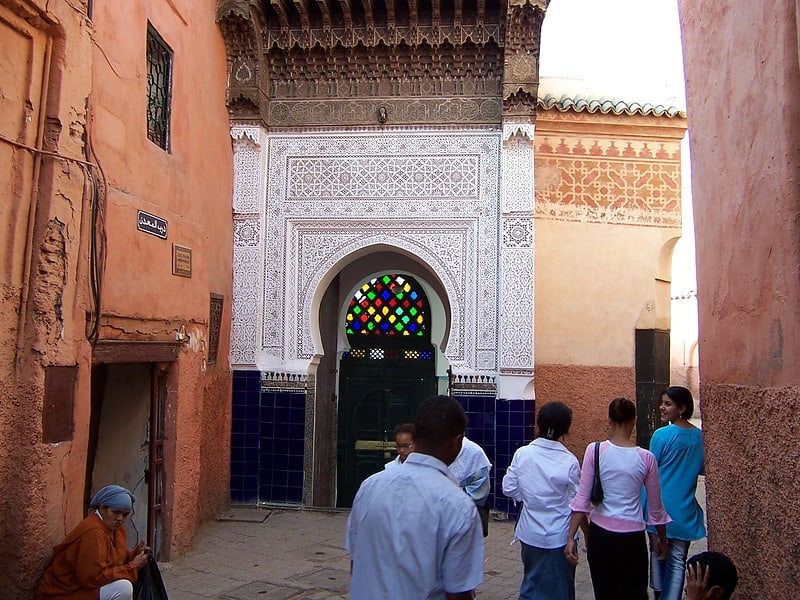
The Zawiya of Sidi Abd el-Aziz is an Islamic religious complex in Marrakesh, Morocco. It is centered around the tomb of the Muslim scholar and Sufi saint Sidi Abu Faris Abd al-Aziz Abd al-Haq at-Tabba', who died in Marrakesh in 1508. Sidi Abd el-Aziz is considered one of the Seven Saints of Marrakesh, and his tomb was a prominent stop for pilgrims to Marrakesh. The zawiya is located on Rue Mouassine at its intersection with Rue Amesfah.[19]
Zawiya of Sidi Muhammad Ben Sliman al-Jazuli
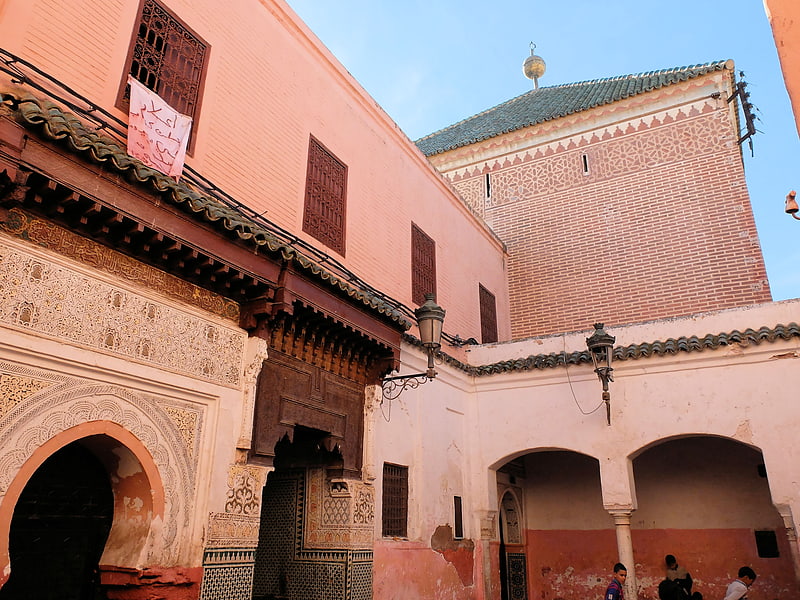
The Zawiya of Sidi Muhammad Ben Sliman al-Jazuli is an Islamic religious complex in Marrakesh, Morocco. It is centered around the tomb of the 15th-century Muslim scholar and Sufi saint Muhammad al-Jazuli, who is one of the Seven Saints of Marrakesh.[20]